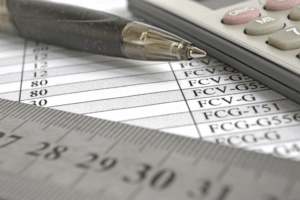What Is Unearned Revenue and How to Account for It

For small businesses, especially those operating on thin margins, understanding the future revenue stream is crucial. Unearned revenue, being a significant indicator of future income, plays a pivotal role in both short-term and long-term planning. It’s important to track and monitor this data over time to ensure that the cash flow statement properly reflects financial performance. An income statement, also called a Profit and Loss statement (or P&L) records revenue and expenses over time. Cash basis accounting is an accounting method whereby income and expenses are recognized only when cash is exchanged. Therefore, that revenue is recorded as unearned so that the balance sheet accurately reflects the deferral.
When Half Is Prepaid, Then You Split Between The Two
Companies that use the accrual method of accounting are required to record unearned revenue. This is a particularly important requirement for any large publicly-traded company. Sometimes it’s also called deferred revenue, prepayment, or advance payments.
Reporting unearned revenue: what you need to know

Morningstar increased quarterly and monthly invoices but is less reliant on upfront payments from annual invoices, meaning the balance has been growing more slowly than in the past. Whether you’re a small, where is unearned revenue recorded budding startup or a large, Fortune 100 conglomerate, you’re likely to come in contact with unearned revenue at some point. These companies simply recognize the revenue in full when they receive a payment.
- These prepayments can benefit organizations by providing cash flow for business operations.
- These are are all various ways of referring to unearned revenue in accounting.
- When the customer pays the money beforehand, it would be seen as unearned as it was received but not earned due to the service or good not being provided.
- In accounting, unearned revenue has its own account, which can be found on the business’s balance sheet.
What if I use cash basis accounting?
The business has not yet performed the service or sent the products paid for. So, the trainer can recognize 25 percent of unearned revenue in the books, or $500 worth of sessions. The recognition of unearned revenue relates to the early collection of cash payments from customers. Note that when the delivery of goods or services is complete, the revenue recognized previously as a liability is recorded as revenue (i.e., the unearned revenue is then earned). Unearned revenue can provide clues into future revenue, although investors should note the balance change could be due to a change in the business.
HOW IS UNEARNED REVENUE CLASSIFIED IN FINANCIAL STATEMENTS?
The conservatism principle says that no profit should be recorded by a company until it’s certain to occur. Basically, we want to be cautious about reporting items on financial statements. We only want to recognize revenue once specific tasks have been completed, which give us full claim to the money. Unearned revenue and deferred revenue are the same things, as are deferred income and unpaid income. These are are all various ways of referring to unearned revenue in accounting.
- Once a company delivers its final product to the customer, only then does unearned revenue get reversed off the books and recognized as revenue on your profit and loss statement.
- In effect, we are transferring $20,000, one-third of $60,000, from the Unearned Rent Income (a liability) to Rent Income (an income account) since that portion has already been earned.
- Over time, the revenue is recognized once the product/service is delivered (and the deferred revenue liability account declines as the revenue is recognized).
- The balance sheet, also known as the “Statement of Financial Position,” presents a snapshot of a business’s assets, liabilities, and equity.
- Cash on the balance sheet would increase by $60, and a liability called unearned revenue would be created for $60 to offset it.
- The business has not yet performed the service or sent the products paid for.
Adjusting entry for unearned revenue
Companies using the accrual method can make use of unearned revenue to help align income with costs and potentially defer income taxes until later periods when revenue has been earned. Over time, the liability gradually gets converted into income (earned revenue) as the product or service gets delivered. Since the customer may have the option to cancel their order, or the product or service may not get delivered for other reasons, the payment is considered a liability for the company receiving it.
An easy way to understand deferred revenue is to think of it as a debt owed to a customer. Unearned revenue must be earned via the distribution of what the customer paid for and not before that transaction is complete. By delivering the goods or service to the customer, a company can now credit this as revenue. The initial entry for this liability is a debit to cash, and a credit to the unearned revenue account.
Is unearned revenue a liability or an asset?
- Though investors should be aware that the shift in the balance may be the result of a change in the business, unearned revenue can provide hints about future revenue.
- Trying to convert unearned revenue into earned revenue too quickly, or not using a deferred revenue account at all, can be classified as aggressive accounting.
- When they pay the rest and complete the transaction, they need to adjust the accounts.
- Allocate that amount on your books to recognize the revenue once the business obligation has been satisfied.
- Unearned income is income that a company receives from investments or other sources that aren’t related to its main business activities.
- On July 1, Magazine Inc received a $60 payment for a one-year subscription from a new customer.
However, each accounting period, you will transfer part of the unearned revenue account into the revenue account as you fulfill that part of the contract. Companies maintain appropriate accounting procedures and guarantee transparency in their financial statements by classifying prepayments as liabilities until services are rendered. This journal entry reflects the fact that the business has an influx of cash but that cash has been earned on credit. This is why unearned revenue is recorded as an equal decrease in unearned revenue (a liability account) and increase in revenue (an asset account).
How is unearned revenue handled on the cash flow statement?
Manage deductions, track GST, invite collaborators and never second guess payroll calculations again. Manage complex financials, inventory, payroll and https://www.bookstime.com/articles/sga more in one secure platform. From sole traders who need simple solutions to small businesses looking to grow, you can do it all in one place with MYOB.
